#Kahkashan Khan
Photo
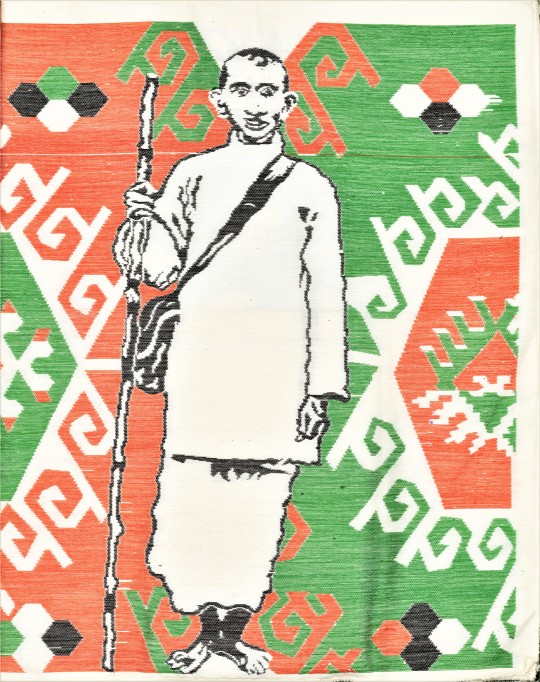
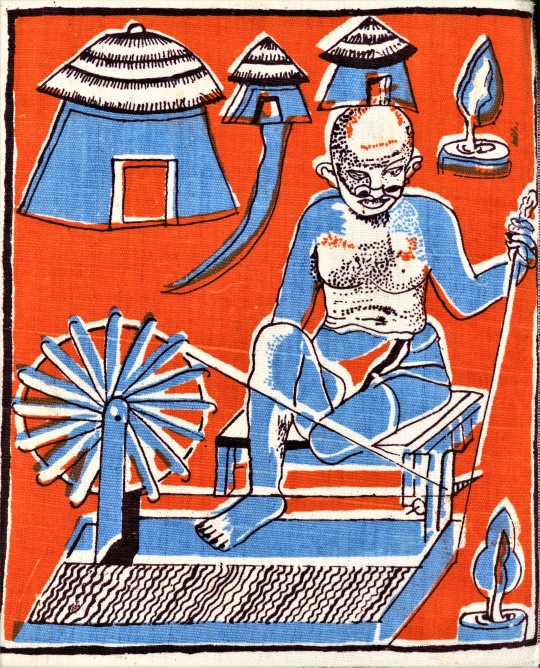





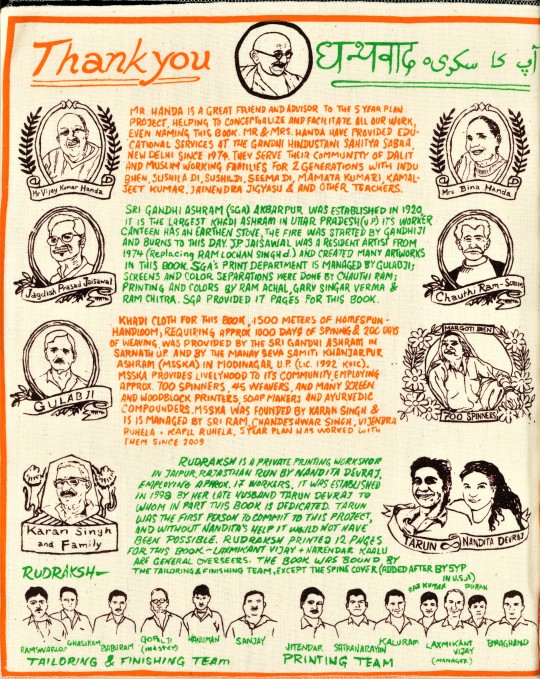
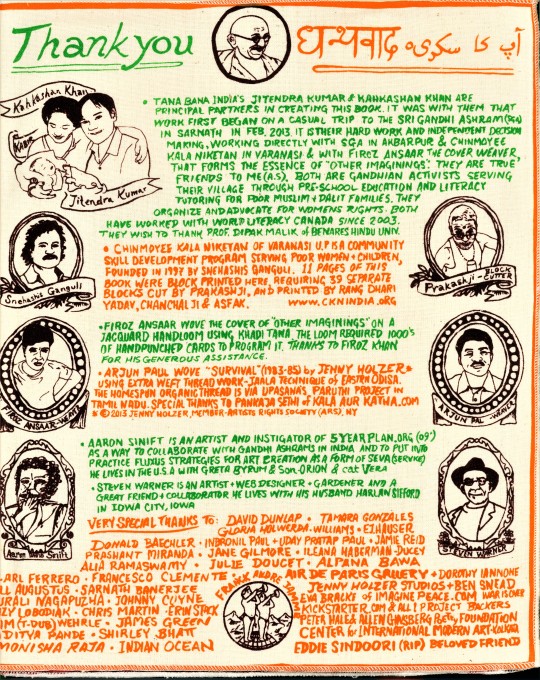
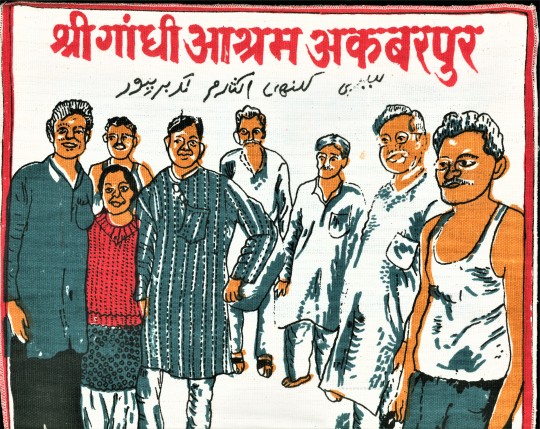
Asian American and Pacific Islander Heritage Month
During this AAPI Heritage Month we present Other Imaginings, an artists book made of hand-spun and woven Khadi cloth, with images woven, silkscreened, and relief printed by Indian artisans at Sri Gandhi Ashram in Akbarpur, the Chinmoyee Kala Niketan in Varanasi and Rudraksh in Jaipur. The images were curated and the project coordinated by American visual artist Aaron Sinift in collaboration with his Indian colleagues Kahkashan Khan and Jitendra Kumar. The book was produced in the state of Uttar Pradesh by 5YearPlan.org in 2016 in a limited edition of 100 copies.
The project explores universal aspects of Gandhian visual culture in discourse with contemporary international artists and new ashram artist commissions. Sinift writes:
This book is a seva (service) in honor of Mohandas Gandhi (1892-1948) and inspired by the khadi cloth he wore and propagated throughout India. Gandhij sae khadi as a swadeshi (locally produced & used)fabric to clothe a free and independent India. . . . OTHER IMAGININGS is an attempt to introduce Gandhiji’s counter-industrial vision of village self-sufficiency. . . . This book in an artifact (art & fact) of a living tradition of service that continues into the present day, and is curated as a mix of deshi & videshi (local + foreign), Gandhi ashram & contemporary art. We hope you will take the time to consider the qualities of this home-spun khadi . . . and linger on its fragrance and tactile qualities as evidence of the hundreds of hands contributing to its creation. . . .
The book includes images designed by several non-Indian artists, such as Judith Linhares, Dorothy Iannone, Jenny Holzer, Philip Taaffe, Duncan Tonatiuh Smith, and Yoko Ono. Except for the cover, we are only showing the pages designed by Indian artists here. Click on the images for attributions.

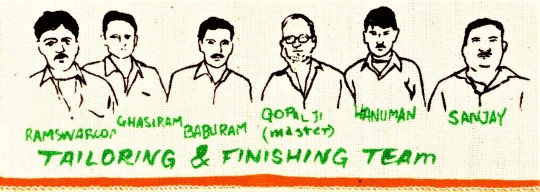
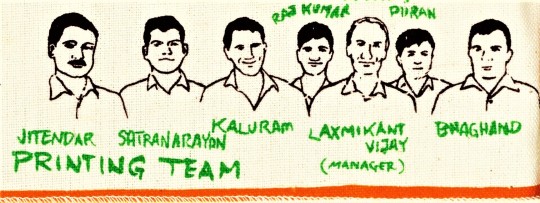
#Asian American and Pacific Islander Heritage Month#AAPI Heritage Month#holidays#India#Indian art#khadi#Other Imaginings#Aaron Sinift#Kahkashan Khan#Jitendra Kumar#5YearPlan.org#Sri Gandhi Ashram Akbarpur#Chinmoyee Kala Niketan#Rudraksh#J. P. Jaisawal#silkscreen printing#woodblock prints#hand-woven fabric
31 notes
·
View notes
Photo

Remembering #Indurani, Actress & Singer of 1930's & 40's on her 95th birth anniversary.
Ishrat Jehan Imamuddin aka Indurani was born in a middle class family of Delhi, on the 22nd of June, 1922. Her mother Munawar Jehan was one of the first female students of the then newly opened Hakim Ajmal Khan school of Jamia Millia University of Delhi. After graduating from the school as a Lady Doctor and Hakim, she had worked in the princely states of Zanzira and Tonk. Her father Shaikh Imamuddin was the owner of a fleet of 17 horse carriages (Victorias and tongas) and one of his contracts was for transporting female students to the Mission Girls Urdu School in Delhi. Therefore, Ishrat and her sisters Afroz and Roshan got a good education in that school. They were 7 children in all. Ishrat was the third child. Naseem Bano (whose real name was also Roshan)–the actress and the mother of Saira Bano–also studied in the same school for a short period.
Ishrat’s sister Roshan was adventurous and she corresponded with a film studio and sent her photo. They wrote back offering her a job of Rs.300 per month. When their father came to know this, he first admonished and bashed her. At that time, due to his gambling habit, he was in debts and financial difficulties, so he thought that his daughters could earn money for him as film stars.
sarojiniWhen Ishrat was about 12-13 years old and was studying in Eighth Standard, her father brought her and her elder sister Roshan Jehan to Poona to find work in films. Talkie films had just started and film makers were on the look out for good looking boys and girls who could speak Urdu/Hindi fluently. The sisters got work in Dadasaheb Torne’s Saraswati Cinetone. They both were renamed as Indurani (Ishrat Jehan) and Sarojini (Roshan Jehan). In those days, most Muslim artistes took Hindu names for obvious reasons. While in Poona, the sisters were getting Rs 300/- per month as salary. Their father took three months’ advance payments and left for Delhi, leaving the sisters in the care of their Nani (maternal grandmother). In Poona, they became quite friendly with a co-actor Vasantrao Pehelwan (who later did villain’s roles in Master Bhagwan’s stunt films). They called him ‘uncle’ ji.
In Poona, Indurani first worked in a Marathi film called Savitri in a minor uncredited role of a younger sister. Unfortunately the Marathi film of Dadasaheb Torne flopped and his studio closed down. The sisters decided to shift to Bombay to seek work prospects. Vasantrao Pehelwan got them a flat on rent in Dadar’s Hindu Colony in Bombay.
While in Bombay, Indurani got work in films of Daryani Productions like Fida E Watan (1936), Pratima (1936), Bulldog (1937) and Insaaf (1937). While doing films Pratima and Insaaf, she fell in love with her handsome co-star Prem Adeeb. However, when it became clear that he could not muster enough courage to marry her in opposition to his family (he was a Hindu Kashmiri Pandit and she was a Muslim), she refused to continue relations. She was a very strong woman indeed.
Soon the word spread around that two sisters were available for work. The sisters did not know much of anything in Bombay and could not go anywhere. So producers came to them. First was V. Shantaram who offered Indurani a job at Rs.300 per month. She insisted that her sister and “Uncleji” should also get work. Shantaram agreed for Sarojini but refused Vasantrao Pehelwan, so the job did not materialize. “Uncleji” went away soon after that. One day Sohrab Modi and Keki Modi came looking for them. Sohrab Modi offered them contracts for Rs. 450 per month and invited them to the studio. When they reached Minerva Movietone, they saw Leela Chitnis smoking with a long holder. Young Indurani was impressed and also tried to copy her; but Sohrab Modi, who treated her like his daughter, told her that it did not suit her and she gave up.
One day Ramniklal Shah of Mohan Pictures and his friend Nanabhai Bhatt (father of Mahesh and Mukesh Bhatt) came calling. By that time Nanabhai Bhatt had already got involved with his star Shirin Bano. Ramniklal offered them a salary of Rs. 500 per month. This was more than Minerva, so the offer was accepted but in the process Indurani lost her chance to work in a prestigious company like Minerva. Their old schoolmate Naseem Bano was at Minerva and came to prominence with the film Pukar (1939) made by Minerva. The sisters did not have anyone to advise them, so they lost their chances at Prabhat and Minerva. Thus from 1938 onwards, Ramniklal Shah took them under his wings.
At the age of 17 in 1939 Indurani married Ramniklal Shah, secretly. Her elder sister Sarojini also married Nanubhai Vakil, the lead director of Mohan Pictures (Azra is their daughter). Indurani had six children. One of them died at birth. The shock was too much for her and after 1943, her career started slowing down. By 1949, her last film was released.
In my opinion, Indurani was a “one of a kind” woman. In those days and for her age, she showed exemplary planning, foresight and had the right priorities for her future. Being from an educated family, she knew and understood the importance of education. She ensured that all her children got the best possible education to enable them to lead comfortable lives. Her children went to the prestigious missionary school in Santa Cruz, The Sacred Boys’ High School. Saira Bano’s brother Sultan, Shashadhar Mukherjee’s sons Rono, Joy, Debu and Shomu Mukherjee, as well as Milan Roy Choudhary (Geeta Dutt’s younger brother) also studied in the same school. All her children settled successfully in the United States.
She understood the three basics of life: food, shelter and clothing. She did work in double shifts and saved enough money to build her own bungalow in Santa Cruz (a western suburb of Bombay) in 1940–at the age of about 18 years! In a front page story, The Times of India called her the youngest house owner in Bombay in those days. The house was designed by the famous architect Noorani.
She also saved enough to spend her twilight years happily. She spent her last 35 years in the US, enjoying life with her entire family. This, when we have hundreds of stories of artistes who died in penury and neglect!
Salim ji has many stories, anecdotes and interesting tidbits from the Bombay film world of those days. Indurani’s brother Naseem Siddiqui was a producer and a director of films made by Mohan Pictures. His friend Hasan Sehrai was a dialogue writer and editor of a film magazine called “Kahkashan”. Lyricist Shevan Rizvi was also his friend. Naseem Siddiqi’s younger sister Shirin got married to Hasan Sehrai. Indurani’s sister Sarojini (Roshan Jehan) worked in films at the same time. She worked in about 17 films according to the Hindi Film Geet Kosh (HFGK) and sang a few songs. Sarojini and Indurani worked together in three films, namely Jadui Kangan (1940), Hatimtai Ki Beti (1940) and Tajmahal (1941).
Indurani acted in 21 (including 1 Marathi) films according to HFGK and as researched by both Salim ji and Harish ji. Her Filmography is given at the end; please note that she was credited variously as Indu, Indurani and also as Indubala. There was another Indubala also, but she worked in films made in Calcutta and by Calcutta producers. Those films are excluded from this list, based on Salim ji’s information.
Indurani worked with several well known heroes of her times, like Prem Adeeb, Jayant, Jeevan, Yaqub, Mubarak, Sushil Kumar, Yusuf Efendi, Nazir, Navin Yagnik, Yashwant Dave etc. She had good directors for her films, like G.R. Sethi, Ram Daryani, Dwarka Khosla, J.P. Advani, K. Amarnath, Mohan Sinha, and Nanubhai Vakil. She had training in classical music while she worked in Daryani productions and with this background, she sang two songs each in three films. She sang four songs under the baton of Anil Biswas and two under Madholal Master.
Both Ramniklal Shah and Indurani were very generous and helpful in nature. When child artist Meena Kumari was in financial distress and her father approached Ramnikbhai, without thinking he gave Rs. 5000 and never asked for its return. Meena Kumari never forgot this kind gesture and always respected Ramnikbhai.
inger-actress Nirmala Devi was Indurani’s friend and her husband (actor Govinda’s father) Arun Ahuja was her “Rakhi Brother”. When the Ahuja family lost everything, it was Indurani who paid for their monthly expenses for two months. Later the Ahujas sold their house in Juhu and shifted to Virar, but they paid back all the money to Indurani. Exactly opposite was was the case of director-producer-actor Nazir and his wife, actress Swarnalata (a Siyal Jat Sikh from Rawalpindi). They visited Indurani in their Rolls Royce, borrowed some money from her and then, within few days, quietly migrated to Pakistan, without repaying the amount.
In the early 1960s, Salim ji and other siblings one by one left for America for studies, and then all settled in the US. Ramnikbhai Shah died in 1973. Later Indurani also shifted to the US and stayed with her sons by turns. She spent her time happily with twelve grandchildren and six great-grandchildren. Indurani died in the US on February 17, 2012 at the ripe age of 90 years, after a fruitful and contented life. Her grave is in the Ventura County, California town of Camarillo.
Like बॉलीवुड डायरेक्ट Bollywoodirect
Courtesy- Arunkumar Deshmukh & memsaabstory
2 notes
·
View notes
Text
Mustafa Zaidi
Mustafa Zaidi (1930–1970) was a progressive Urdu poet whose work and literary accomplishments remain popular and relevant today.[citation needed] He was born on 16 October 1930 in Allahabad, Uttar Pradesh (UP), India to Lakhte Hasnain and Binte Haider. His father was a senior official in the Criminal Investigation Department (CID) of the UP Province, with roots in Meman Saadat, a village in district Bijnor. Mustafa Zaidi grew up in a household with five elder half brothers and was the second of three full brothers
Education
Mustafa Zaidi received his early religious education at home from a local scholar, and also at a local Madrassa in Allahabad. From 1936 to 1945, he attended the Modern High School in Allahabad, where he passed his High School examination in 1945 with second division and a distinction in Urdu.[citation needed] He was the Secretary of the Urdu Literary Society (Bazm-e-Urdu).[citation needed] He then attended the Ewing Christian College, Allahabad, and passed the Intermediate exam of the Board of High School and Intermediate Education, UP, in the first division in 1948.[citation needed] In 1950, he was awarded a first class Bachelor of Arts degree holding the 6th position from Allahabad University.[citation needed] He also won prestigious accolades such as Professor Dunn’s Gold Medal, Dr. R.N Bhatia’s Medal, and Iqbal Gold Medal.[citation needed] After completing his MA, he migrated to Pakistan in 1951 and completed his Master’s degree in English Literature in 1953 from Government College, Lahore.[citation needed]
Professional life
Zaidi gained jobs as professor in Islamia Science College, Karachi, and the University of Peshawar before entering the Civil Service of Pakistan in 1954. After his initial appointments as Assistant Commissioner of Sialkot, Dera Ghazi Khan and Murree, he remained Deputy Commissioner in Jhelum, Nawabshah, Khairpur, Sahiwal and Lahore. During his career, he received the prestigious civil award of Tamgha-e-Quaid-e-Azam for outstanding service.[citation needed] He attended Muffield Foundation training in London and returned to Pakistan in 1969 to take up what would be his last post as Secretary (Bunyadi Jamhooriat).[citation needed] His service career came to an end with his suspension from government service in December 1969 followed by dismissal in May 1970 during the tenure of President Agha Muhammad Yahya Khan.[citation needed]
Literary work
Mustafa Zaidi’s first book of nazms, Zangeerein/Roshni (Chains/Light), was published in Allahabad in 1949, under the pseudonym "Tegh Allahabadi" (Sword of Allahabad), when he was just nineteen.[citation needed] Zangeerein was endorsed by two legendary Urdu poets Josh Malihabadi and Firaq Gorakhpuri, who became mentors for young Tegh Allahabadi.[citation needed] The second edition was published as Roshni in Lahore in 1950. After moving to Pakistan, the poet dropped his pseudonym "Tegh Allahabadi" and continued to write poetry as "Mustafa Zaidi".[citation needed] His published works include:
Zangeerein (1949)
Roshni (1950)
Shehr-e-Azar (City of idol worshippers) (1958)
Mauj Meri Sadaf Sadaf (1960)
Gareban (1964)
Qaba-e-Saaz (1967)
Koh-e-Nida (1971) (published posthumously)
One verses includes these words:
"Innhi pattharoun pey chal kar agar aa sako tou aao meray ghar key raastey mey koi kahkashan nahin hai
Mey kiss key haath pey apnaa lahoo talaash karoun tamaam shehr ney pehney huwein hein dastaaney"[citation needed]
Death
Mustafa Zaidi is believed[by whom?] to have been murdered in an apartment in Karachi where he was residing, and his body was found alongside Shahnaz Saleem — a popular socialite — who was initially charged with murder. After a media circus and a prolonged and complicated court case, the cause of death was deemed to be suicide.[citation needed] The mysterious circumstances and controversies leading to Zaidi’s death on 22 October 1970, at the age of 39, made headlines in newspapers in Pakistan and threatened to overshadow his legacy as a poet.[citation needed]
Work on Mustafa Zaidi after his death
Soon after his death, many leading Urdu poets paid their tribute to Mustafa Zaidi in form of poems and essays. Mustafa Zaidi supplements were published by major literary magazines Naqoosh, Afkar and Naiee Qadrein.[citation needed] The memorial work, Al-Marhum (The departed) collected essays from the issue of the literary magazine Nuqoosh.[citation needed] Compilations and books remembering Mustafa Zaidi such as Ek tha Raja and Mustafa Zaidi ki Kahani (Hamid Baig) were also published.[citation needed] A comprehensive research on Mustafa Zaidi was conducted by Laurel Steele in 2005-2006 from the University of Chicago. Her doctoral thesis was titled "Relocating the Post Colonial Self: Place, Metaphor, Memory and the Urdu Poetry of Mustafa Zaidi".[citation needed]
Personal life
Earlier, Mustafa Zaidi married a German lady named Vera and had a son Mujtaba Zaidi and a daughter Ismat Zaidi.[citation needed.[citation needed]
#Pakistan#Mustafa Zaidi#Islamia Science College#Firaq Gorakhpuri#Ewing Christian College#Dera Ghazi Khan#Criminal Investigation Department#Allahabad
0 notes
Photo
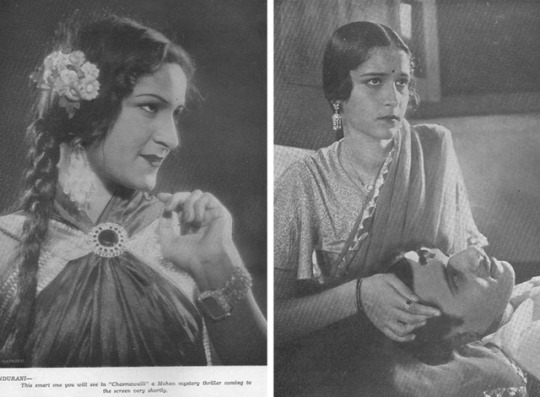

Remembering #Indurani, Actress & Singer of 1930's & 40's on her 5th death anniversary.
Ishrat Jehan Imamuddin aka Indurani was born in a middle class family of Delhi, on the 22nd of June, 1922. Her mother Munawar Jehan was one of the first female students of the then newly opened Hakim Ajmal Khan school of Jamia Millia University of Delhi. After graduating from the school as a Lady Doctor and Hakim, she had worked in the princely states of Zanzira and Tonk. Her father Shaikh Imamuddin was the owner of a fleet of 17 horse carriages (Victorias and tongas) and one of his contracts was for transporting female students to the Mission Girls Urdu School in Delhi. Therefore, Ishrat and her sisters Afroz and Roshan got a good education in that school. They were 7 children in all. Ishrat was the third child. Naseem Bano (whose real name was also Roshan)–the actress and the mother of Saira Bano–also studied in the same school for a short period.
Ishrat’s sister Roshan was adventurous and she corresponded with a film studio and sent her photo. They wrote back offering her a job of Rs.300 per month. When their father came to know this, he first admonished and bashed her. At that time, due to his gambling habit, he was in debts and financial difficulties, so he thought that his daughters could earn money for him as film stars.
sarojiniWhen Ishrat was about 12-13 years old and was studying in Eighth Standard, her father brought her and her elder sister Roshan Jehan to Poona to find work in films. Talkie films had just started and film makers were on the look out for good looking boys and girls who could speak Urdu/Hindi fluently. The sisters got work in Dadasaheb Torne’s Saraswati Cinetone. They both were renamed as Indurani (Ishrat Jehan) and Sarojini (Roshan Jehan). In those days, most Muslim artistes took Hindu names for obvious reasons. While in Poona, the sisters were getting Rs 300/- per month as salary. Their father took three months’ advance payments and left for Delhi, leaving the sisters in the care of their Nani (maternal grandmother). In Poona, they became quite friendly with a co-actor Vasantrao Pehelwan (who later did villain’s roles in Master Bhagwan’s stunt films). They called him ‘uncle’ ji.
In Poona, Indurani first worked in a Marathi film called Savitri in a minor uncredited role of a younger sister. Unfortunately the Marathi film of Dadasaheb Torne flopped and his studio closed down. The sisters decided to shift to Bombay to seek work prospects. Vasantrao Pehelwan got them a flat on rent in Dadar’s Hindu Colony in Bombay.
While in Bombay, Indurani got work in films of Daryani Productions like Fida E Watan (1936), Pratima (1936), Bulldog (1937) and Insaaf (1937). While doing films Pratima and Insaaf, she fell in love with her handsome co-star Prem Adeeb. However, when it became clear that he could not muster enough courage to marry her in opposition to his family (he was a Hindu Kashmiri Pandit and she was a Muslim), she refused to continue relations. She was a very strong woman indeed.
Soon the word spread around that two sisters were available for work. The sisters did not know much of anything in Bombay and could not go anywhere. So producers came to them. First was V. Shantaram who offered Indurani a job at Rs.300 per month. She insisted that her sister and “Uncleji” should also get work. Shantaram agreed for Sarojini but refused Vasantrao Pehelwan, so the job did not materialize. “Uncleji” went away soon after that. One day Sohrab Modi and Keki Modi came looking for them. Sohrab Modi offered them contracts for Rs. 450 per month and invited them to the studio. When they reached Minerva Movietone, they saw Leela Chitnis smoking with a long holder. Young Indurani was impressed and also tried to copy her; but Sohrab Modi, who treated her like his daughter, told her that it did not suit her and she gave up.
One day Ramniklal Shah of Mohan Pictures and his friend Nanabhai Bhatt (father of Mahesh and Mukesh Bhatt) came calling. By that time Nanabhai Bhatt had already got involved with his star Shirin Bano. Ramniklal offered them a salary of Rs. 500 per month. This was more than Minerva, so the offer was accepted but in the process Indurani lost her chance to work in a prestigious company like Minerva. Their old schoolmate Naseem Bano was at Minerva and came to prominence with the film Pukar (1939) made by Minerva. The sisters did not have anyone to advise them, so they lost their chances at Prabhat and Minerva. Thus from 1938 onwards, Ramniklal Shah took them under his wings.
At the age of 17 in 1939 Indurani married Ramniklal Shah, secretly. Her elder sister Sarojini also married Nanubhai Vakil, the lead director of Mohan Pictures (Azra is their daughter). Indurani had six children. One of them died at birth. The shock was too much for her and after 1943, her career started slowing down. By 1949, her last film was released.
In my opinion, Indurani was a “one of a kind” woman. In those days and for her age, she showed exemplary planning, foresight and had the right priorities for her future. Being from an educated family, she knew and understood the importance of education. She ensured that all her children got the best possible education to enable them to lead comfortable lives. Her children went to the prestigious missionary school in Santa Cruz, The Sacred Boys’ High School. Saira Bano’s brother Sultan, Shashadhar Mukherjee’s sons Rono, Joy, Debu and Shomu Mukherjee, as well as Milan Roy Choudhary (Geeta Dutt’s younger brother) also studied in the same school. All her children settled successfully in the United States.
She understood the three basics of life: food, shelter and clothing. She did work in double shifts and saved enough money to build her own bungalow in Santa Cruz (a western suburb of Bombay) in 1940–at the age of about 18 years! In a front page story, The Times of India called her the youngest house owner in Bombay in those days. The house was designed by the famous architect Noorani.
She also saved enough to spend her twilight years happily. She spent her last 35 years in the US, enjoying life with her entire family. This, when we have hundreds of stories of artistes who died in penury and neglect!
Salim ji has many stories, anecdotes and interesting tidbits from the Bombay film world of those days. Indurani’s brother Naseem Siddiqui was a producer and a director of films made by Mohan Pictures. His friend Hasan Sehrai was a dialogue writer and editor of a film magazine called “Kahkashan”. Lyricist Shevan Rizvi was also his friend. Naseem Siddiqi’s younger sister Shirin got married to Hasan Sehrai. Indurani’s sister Sarojini (Roshan Jehan) worked in films at the same time. She worked in about 17 films according to the Hindi Film Geet Kosh (HFGK) and sang a few songs. Sarojini and Indurani worked together in three films, namely Jadui Kangan (1940), Hatimtai Ki Beti (1940) and Tajmahal (1941).
Indurani acted in 21 (including 1 Marathi) films according to HFGK and as researched by both Salim ji and Harish ji. Her Filmography is given at the end; please note that she was credited variously as Indu, Indurani and also as Indubala. There was another Indubala also, but she worked in films made in Calcutta and by Calcutta producers. Those films are excluded from this list, based on Salim ji’s information.
Indurani worked with several well known heroes of her times, like Prem Adeeb, Jayant, Jeevan, Yaqub, Mubarak, Sushil Kumar, Yusuf Efendi, Nazir, Navin Yagnik, Yashwant Dave etc. She had good directors for her films, like G.R. Sethi, Ram Daryani, Dwarka Khosla, J.P. Advani, K. Amarnath, Mohan Sinha, and Nanubhai Vakil. She had training in classical music while she worked in Daryani productions and with this background, she sang two songs each in three films. She sang four songs under the baton of Anil Biswas and two under Madholal Master.
Both Ramniklal Shah and Indurani were very generous and helpful in nature. When child artist Meena Kumari was in financial distress and her father approached Ramnikbhai, without thinking he gave Rs. 5000 and never asked for its return. Meena Kumari never forgot this kind gesture and always respected Ramnikbhai.
inger-actress Nirmala Devi was Indurani’s friend and her husband (actor Govinda’s father) Arun Ahuja was her “Rakhi Brother”. When the Ahuja family lost everything, it was Indurani who paid for their monthly expenses for two months. Later the Ahujas sold their house in Juhu and shifted to Virar, but they paid back all the money to Indurani. Exactly opposite was was the case of director-producer-actor Nazir and his wife, actress Swarnalata (a Siyal Jat Sikh from Rawalpindi). They visited Indurani in their Rolls Royce, borrowed some money from her and then, within few days, quietly migrated to Pakistan, without repaying the amount.
In the early 1960s, Salim ji and other siblings one by one left for America for studies, and then all settled in the US. Ramnikbhai Shah died in 1973. Later Indurani also shifted to the US and stayed with her sons by turns. She spent her time happily with twelve grandchildren and six great-grandchildren. Indurani died in the US on February 18, 2012 at the ripe age of 90 years, after a fruitful and contented life. Her grave is in the Ventura County, California town of Camarillo.
Courtesy- Arunkumar Deshmukh & memsaabstory
#Ishrat Jehan Imamuddin#Indurani#bollywood#bollywood history#cinema history#history#indian cinema history#indian movies history#bollywoodirect
2 notes
·
View notes